#Jesuit
Text
Our liturgy is not just about remembering, but participating in, the life of Christ.
Fr. Michael Hilbert, S.J.
109 notes
·
View notes
Text

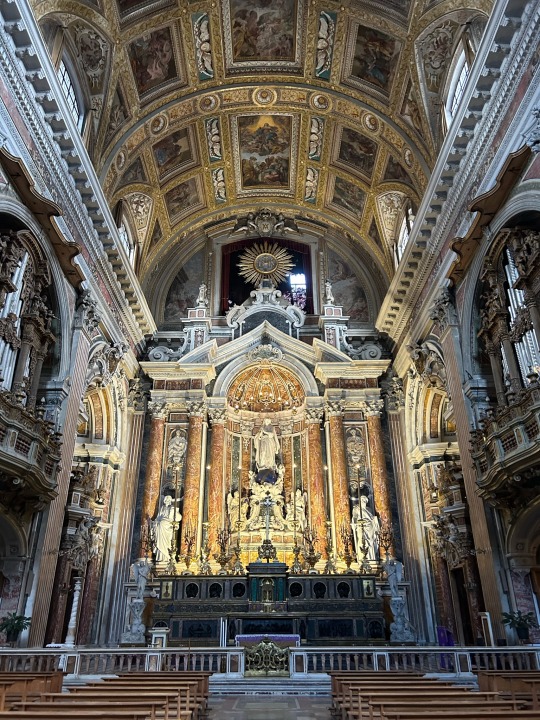
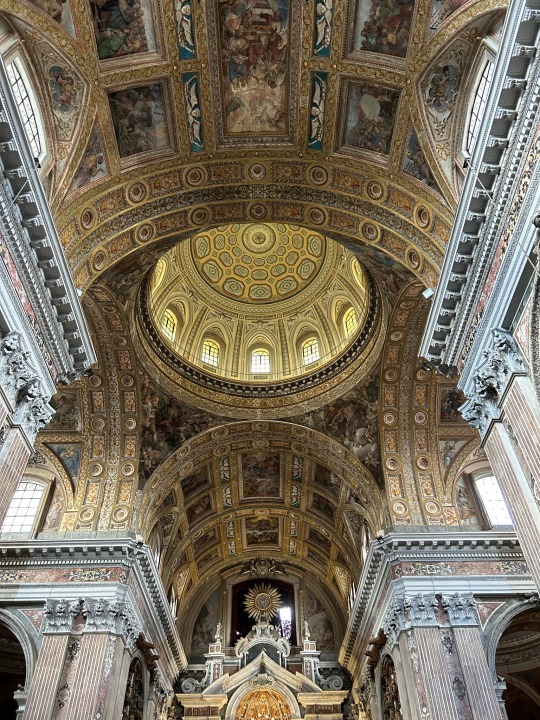
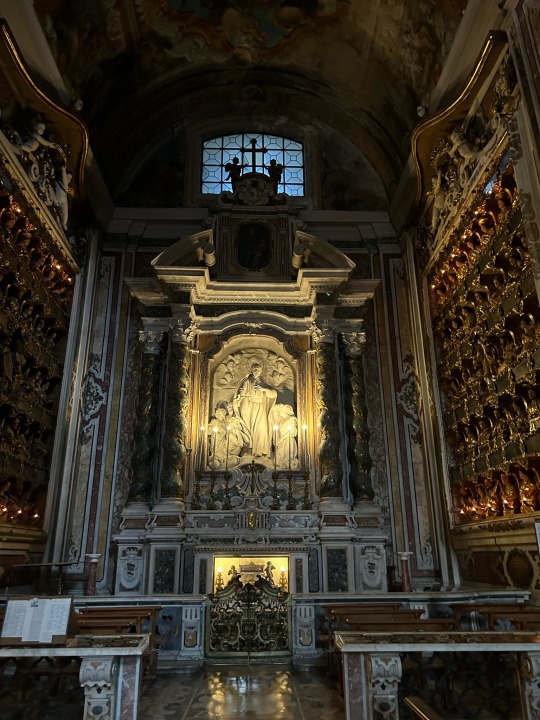


Chiesa del Gesù Nuovo, in Naples, Italy.
March 11, 2024
#Naples#Napoli#Italy#Italia#church#Jesuit#travel#architecture#church architecture#original photography#lensblr#photographers on tumblr#iphonography#photography#historical architecture#baroque#art history#wanderingjana
77 notes
·
View notes
Photo

Saint Claude de la Colombière
1641-1682
Feast day: February 15
Patronage: devotion to the Sacred Heart of Jesus, toy makers, Jesuit preachers, missionaries to England
Saint Claude de la Colombière was born to nobility and served as a Jesuit preacher in the French and English courts. In 1675 he was named rector of the convent where St. Margaret Mary Alacoque lived. As her confessor, he came to support and promote devotion to the Sacred Heart of Jesus, and the visions that St. Margaret received from Jesus. He was unjustly imprisoned and exiled to France during anti-Catholic violence in England which destroyed his health, dying in 1682
{website}
55 notes
·
View notes
Photo

07/15/2022
Don’t try this at home!
___
JOKE-OGRAPHY:
1. St. Kateri was often sick and used to hurt herself in small ways as a form of devotion. According to the articles I read, she'd taint her food with foul-tasting flavors, sleep on thorns, and in at least one instance, burned herself. This (according to the articles) was due in part to her Mohawk upbringing, as her tribe believed in a kind of spiritual strength earned through self-mortification. If the articles are right about that, then when Kateri converted and continued these practices, she was taking the spiritual techniques of her old culture and reorienting them toward her new faith. Eventually, however, her Jesuit spiritual director got worried for her health and ordered her to get his approval for any future penances. Probably for the best.
2. In the last panel, Kateri says that some people probably think her laying on thorns is pointless (as in "without purpose"), but she begs to differ, because the thorns themselves have physical points (as in the sharp pointy bits that poke her), and her suffering has a point as well (as in a purpose; in her mind, the suffering brings her closer to God, the noblest of purposes).
#saints#saint#st kateri tekakwitha#catholic#christian#indian#native american#mohawk#jesuit#just straight up stabbing yourself as a form of devotion to god
196 notes
·
View notes
Text

Nativity -- Lorenzo Lotto (1523)
A Child My Choice
by St Robert Southwell SJ
Let folly praise that fancy loves, I praise and love that Child
Whose heart no thought, whose tongue no word, whose hand no deed defiled.
I praise Him most, I love Him best, all praise and love is His;
While Him I love, in Him I live, and cannot live amiss.
Love's sweetest mark, laud's highest theme, man's most desired light,
To love Him life, to leave Him death, to live in Him delight.
He mine by gift, I His by debt, thus each to other due;
First friend He was, best friend He is, all times will try Him true.
Though young, yet wise; though small, yet strong; though man, yet God He is:
As wise, He knows; as strong, He can; as God, He loves to bless.
His knowledge rules, His strength defends, His love doth cherish all;
His birth our joy, His life our light, His death our end of thrall.
Alas! He weeps, He sighs, He pants, yet do His angels sing;
Out of His tears, His sighs and throbs, doth bud a joyful spring.
Almighty Babe, whose tender arms can force all foes to fly,
Correct my faults, protect my life, direct me when I die!
#Catholic#Christian#Christianity#Christmas#Jesuit#poem#poetry#Catholicism#Jesus#Christ#Jesus Christ#cross#crucifix#painting#sacred art#Holy Family#Child Jesus#Infant Jesus#Nativity#art
65 notes
·
View notes
Text

Ruinas de la Iglesia, San Ignacio Mini, Misiones, 2007.
#architectural sculpture#baroque#jesuit#reducciones#san ignacio mini#17th century#photographers on tumblr#2007#misiones#argentina
25 notes
·
View notes
Text

Corpus Christi Church, Nesvizh, Belarus
An early Jesuit church in the baroque style. Commissioned by Prince Nicholas Radziwill & built by Gian Maria Bernardoni. It contains tombs of powerful Radiziwill family members.
#dark academia#light academia#academia aesthetic#classical#academia#escapism#classic literature#books#books and libraries#architecture#historical#old#history#building#interior#Corpus Christi Church#belarus#baroque#jesuit#Prince Nicholas Radziwill#Gian Maria Bernardoni#Radiziwill family#royal core#cottage core#aesthetic#mood#vibe#academic#style
32 notes
·
View notes
Photo

The Chinese fleet returns to China after putting down a rebellion in Taiwan in 1788. This painting was created as a collaboration between Italian and French Jesuits and Chinese painters.
{WHF} {HTE} {Medium}
89 notes
·
View notes
Photo
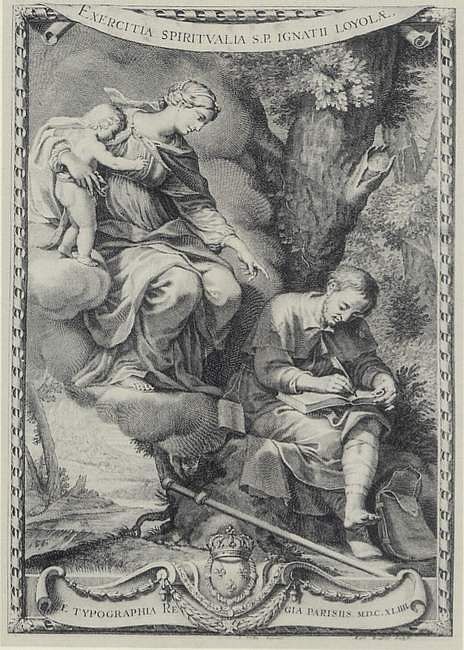
Loyola's Spiritual Exercises
The Spiritual Exercises of Ignatius Loyola (1548) is a manual of disciplines formulated by Ignatius Loyola (l. 1491-1556) to prepare one spiritually for Christian service. They were initially developed between 1522-1524 by Loyola for himself and then shared with others, specifically his friends who formed the Society of Jesus (Jesuits) in 1534. It was first published in 1548.
Continue reading...
25 notes
·
View notes
Text

A summary by Fr Robert J. Spitzer and the Magis Center on what seems as evidence of afterlife, consciousness after death, and the detachment of the soul from the body after death. Paper here: https://7693347.fs1.hubspotusercontent-na1.net/hubfs/7693347/MC_Spitzer%20Scholarly%20Articles/Science_Medicine_and_NDEs.pdf and a brief video here: https://www.youtube.com/watch?v=zLV27gjHQqs
#soul#afterlife#death#heaven#hell#atheism#Jesus#God#Faith#MagisCenter#Jesuit#FrSpitzer#NearDeathExperience#near death experience#life#surgery#clinical death
3 notes
·
View notes
Text
Fr. James Martin's Serenity Prayer
God, grant me the serenity
to accept the people I cannot change,
which is pretty much everyone,
since I'm clearly not You, God.
At least not last time I checked.
And while you're at it, God,
please give me the courage
to change what I need to change about myself,
which is frankly a lot, since, once again,
I'm not You, which means I'm not perfect.
It's better for me to focus on changing myself
than to worry about changing other people,
who, as You'll no doubt remember me saying,
I can't change anyway.
Finally, give me the wisdom to just shut up
whenever I think that I'm clearly smarter
than everyone else in the room,
that no one knows what they're talking about except me,
or that I alone have all the answers.
Basically God,
grant me the wisdom
to remember that
I'm not You.
Amen.
(Source)
33 notes
·
View notes
Text
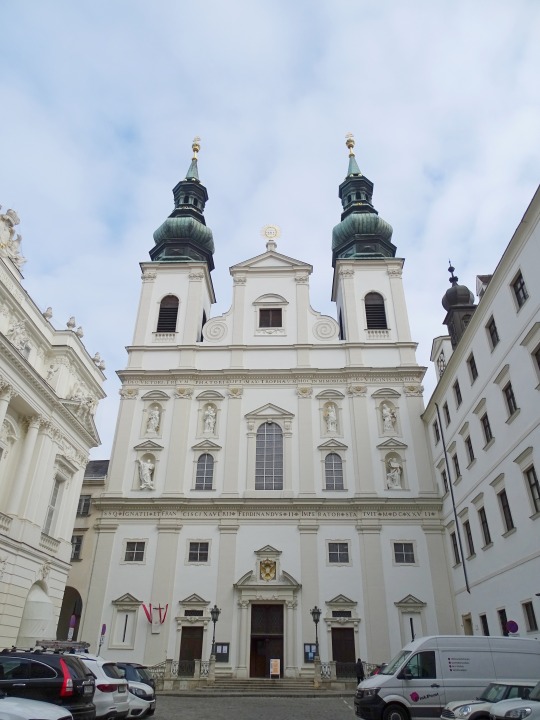

Jesuitenkirche, in Vienna, Austria
Check out my visit to Vienna!
#architecture#vienna#church architecture#travel#church#wandering#explore#original photography#photography#photogaphers on tumblr#historical architecture#baroque#17th century#austria#lensblr#jesuit#wanderingjana
11 notes
·
View notes
Text

Chinese christian children exiting the Jesuit church of Xujiahui district of Shanghai, China
French vintage postcard
#vintage#tarjeta#church#children#briefkaart#postcard#photography#postal#jesuit#carte postale#sepia#ephemera#district#historic#french#ansichtskarte#exiting#postkarte#christian#china#shanghai#xujiahui#chinese#postkaart#photo
6 notes
·
View notes
Text

Et tu, America Magazine?
3 notes
·
View notes
Text
Nobunaga owned piles upon piles of European clothes...
It still doesn’t necessarily mean that he wore them, though.
I’m posting this as something of a correction and update on my previous post saying that there is no solid proof yet that Nobunaga doesn’t wear European clothes.
My point still stands in the sense that nobody so far has produced the proper documentation of him wearing them. Maybe somewhere in the European accounts or diaries that are harder to find, the account actually exist, but I just haven’t been able to see it.
What I wanted to correct was my claim that “he only received one cloak from Frois”. I was wrong, and I have fixed the original post. I just thought I’d post a longer detailed post too, rather than bloating the old post with more text.
In the Historia de Japam, Frois wrote that in 1569, the Kyoto upper class heard that Nobunaga had interest in European articles and presented him with:

“clothing from Europe, grand cloaks, caps and velvet hats with feathers, gold medals with the image of Our Lady (Virgin Mary), pieces of cordovan, timepieces, luxurious kidskins, brilliant crystalline Venetian glass, damasks, satins, and various other articles from India, with which they filled many large crates”
(From Historia de Japam vol 2, published by Biblioteca Nacional de Lisboa)
I’m inclined to believe that he kept the clothes, since it would have been rude to refuse them. Nobunaga would have needed to maintain a good relationship with the upper crust of Kyoto, this early in his career.
I’d love to be able to clarify if the timepieces were watches (which did exist in the 16th century), or if they were clocks. There was another Frois account that said he presented Nobunaga with an alarm clock, but Nobunaga rejected it on the grounds of “it would be difficult to regulate” (per the English translation in “They Came to Japan” book). I’m assuming it just didn’t make sense for Japanese people, because their way of counting the hours is completely different. The Japanese translation, though, interpreted this as meaning that “they won’t be able to fix it if it broke”.
*) An additional side note: This is where I think I was able to attest the less than perfect translation between the Portuguese and Japanese. The term “capas de grã” was translated as “scarlet cloaks” 緋色の合羽 in Japanese. It’s minor, but it’s still a difference/error if “grã” does not actually mean scarlet.
#oda nobunaga#luis frois#historia de japam#history of japan#European artifact#clothing#japanese history#nanban trade#jesuit#Jesuit missionary#society of jesus#samurai#nobunaga oda
9 notes
·
View notes
Text

"Silence", Martin Scorsese, 2016
#silence#silence film#silence 2016#martin scorsese#andrew garfield#adam driver#catholicism#xvi century#jesuits#jesuit#catholic#catholic church
4 notes
·
View notes